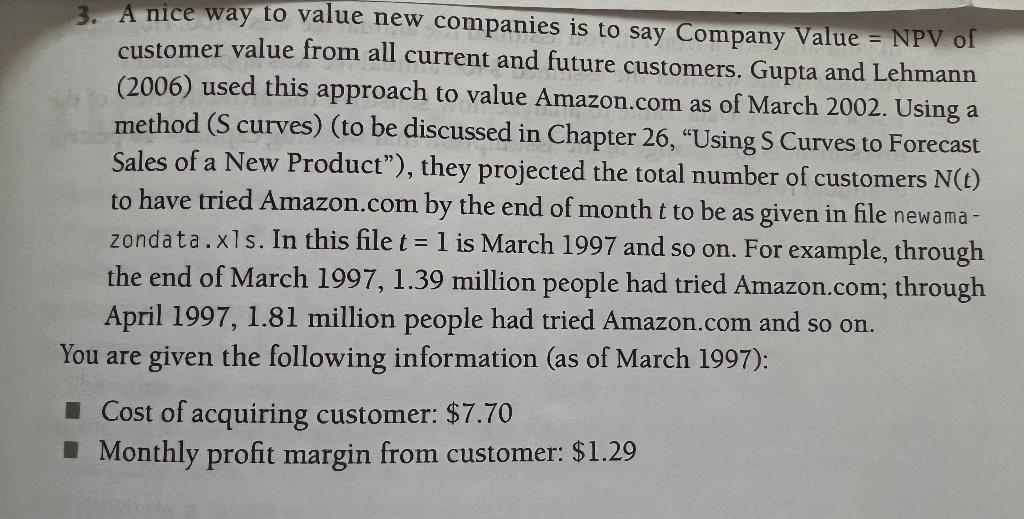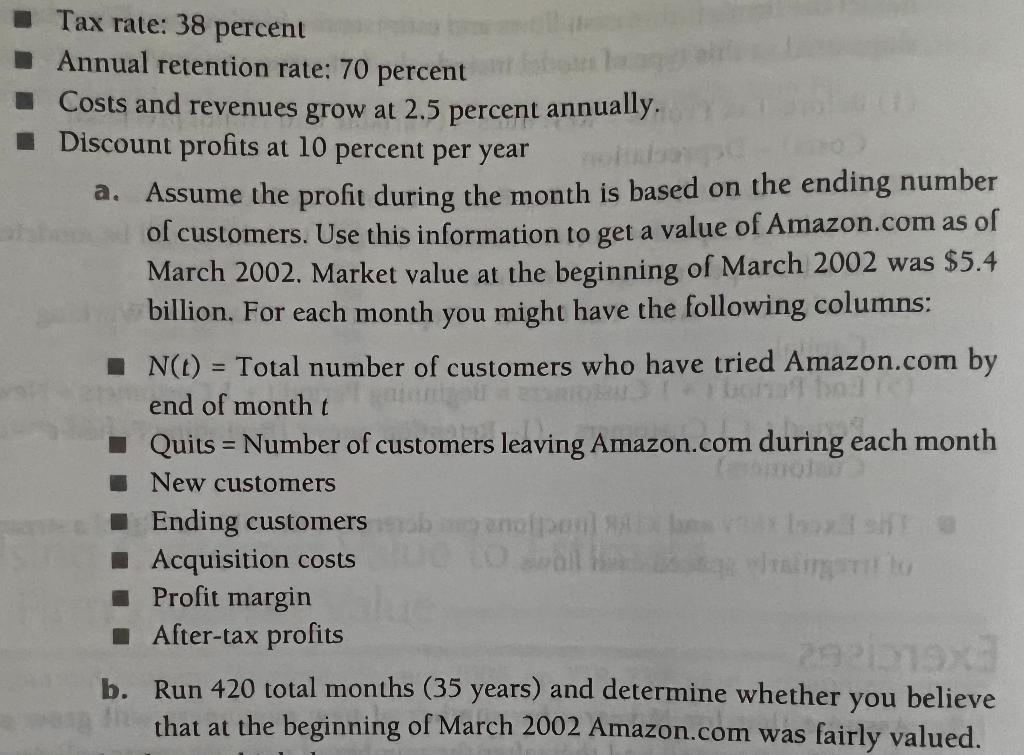

NewAmazonData.xls




3. A nice way to value new companies is to say Company Value =NPV of customer value from all current and future customers. Gupta and Lehmann (2006) used this approach to value Amazon.com as of March 2002. Using a method (S curves) (to be discussed in Chapter 26, "Using S Curves to Forecast Sales of a New Product"), they projected the total number of customers N(t) to have tried Amazon.com by the end of month t to be as given in file newama zondata. x ls. In this file t=1 is March 1997 and so on. For example, through the end of March 1997, 1.39 million people had tried Amazon.com; through April 1997, 1.81 million people had tried Amazon.com and so on. You are given the following information (as of March 1997): Cost of acquiring customer: $7.70 Monthly profit margin from customer: $1.29 Annual retention rate: 70 percent Costs and revenues grow at 2.5 percent annually. Discount profits at 10 percent per year a. Assume the profit during the month is based on the ending number of customers. Use this information to get a value of Amazon.com as of March 2002. Market value at the beginning of March 2002 was $5.4 billion. For each month you might have the following columns: N(t)= Total number of customers who have tried Amazon.com by end of month t Quits = Number of customers leaving Amazon.com during each month New customers Ending customers Acquisition costs Profit margin After-tax profits b. Run 420 total months ( 35 years) and determine whether you believe that at the beginning of March 2002 Amazon.com was fairly valued. go 8 \& 1. : 3. A nice way to value new companies is to say Company Value =NPV of customer value from all current and future customers. Gupta and Lehmann (2006) used this approach to value Amazon.com as of March 2002. Using a method (S curves) (to be discussed in Chapter 26, "Using S Curves to Forecast Sales of a New Product"), they projected the total number of customers N(t) to have tried Amazon.com by the end of month t to be as given in file newama zondata. x ls. In this file t=1 is March 1997 and so on. For example, through the end of March 1997, 1.39 million people had tried Amazon.com; through April 1997, 1.81 million people had tried Amazon.com and so on. You are given the following information (as of March 1997): Cost of acquiring customer: $7.70 Monthly profit margin from customer: $1.29 Annual retention rate: 70 percent Costs and revenues grow at 2.5 percent annually. Discount profits at 10 percent per year a. Assume the profit during the month is based on the ending number of customers. Use this information to get a value of Amazon.com as of March 2002. Market value at the beginning of March 2002 was $5.4 billion. For each month you might have the following columns: N(t)= Total number of customers who have tried Amazon.com by end of month t Quits = Number of customers leaving Amazon.com during each month New customers Ending customers Acquisition costs Profit margin After-tax profits b. Run 420 total months ( 35 years) and determine whether you believe that at the beginning of March 2002 Amazon.com was fairly valued. go 8 \& 1












